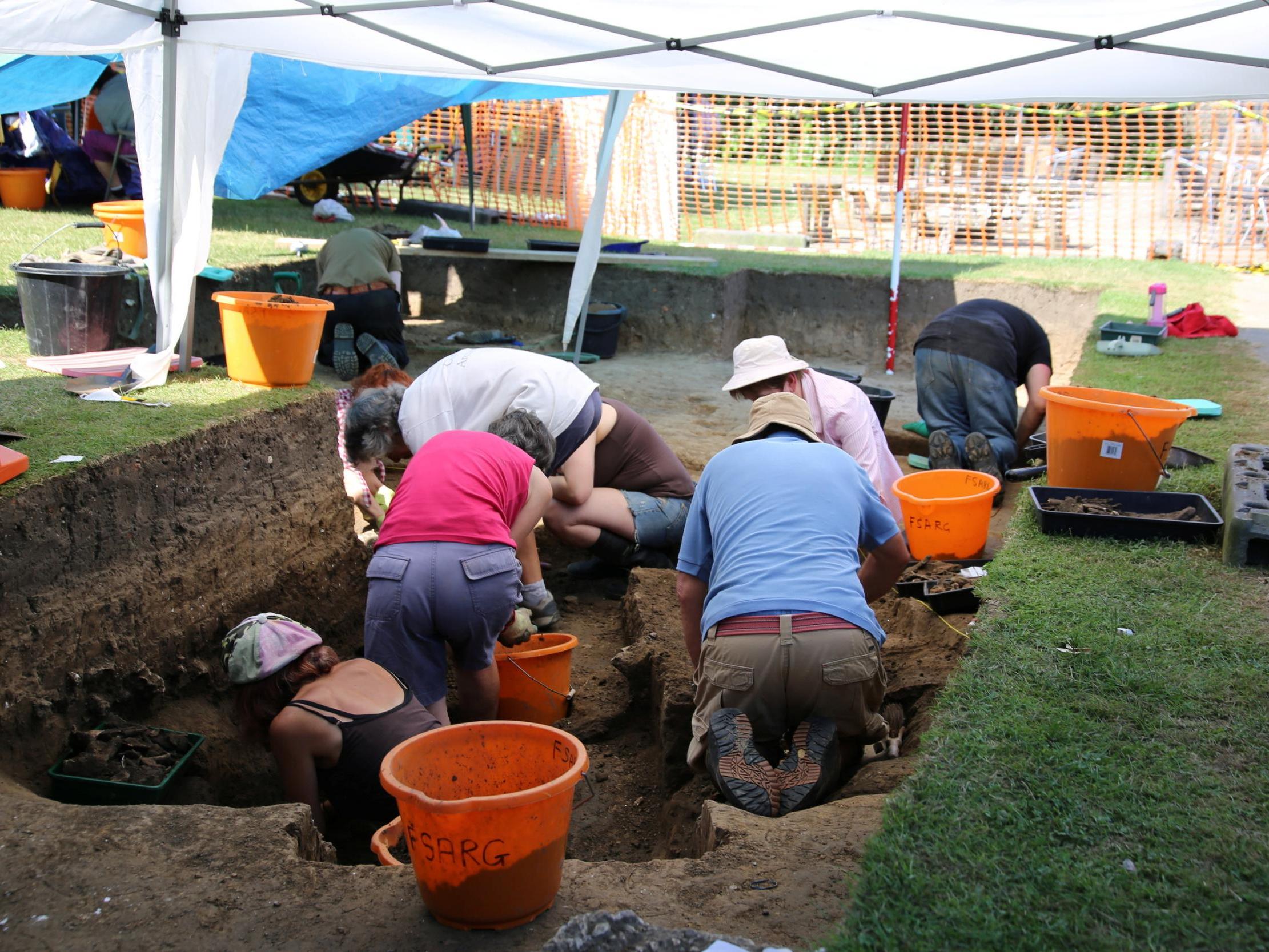Archaeologists find remains of kings’ feasts at Anglo-Saxon royal manor buried beneath beer garden
Researchers searching for proof of ancient royal household end 15-year search with surprise findings
Your support helps us to tell the story
From reproductive rights to climate change to Big Tech, The Independent is on the ground when the story is developing. Whether it's investigating the financials of Elon Musk's pro-Trump PAC or producing our latest documentary, 'The A Word', which shines a light on the American women fighting for reproductive rights, we know how important it is to parse out the facts from the messaging.
At such a critical moment in US history, we need reporters on the ground. Your donation allows us to keep sending journalists to speak to both sides of the story.
The Independent is trusted by Americans across the entire political spectrum. And unlike many other quality news outlets, we choose not to lock Americans out of our reporting and analysis with paywalls. We believe quality journalism should be available to everyone, paid for by those who can afford it.
Your support makes all the difference.An archeological search for an ancient royal manor lasting over a decade has reached its climax beneath a beer garden.
A team of scientists launched a hunt for the Anglo-Saxon house 15 years ago, curious to uncover the knowledge it held into how people lived at the time.
Initially there were doubts that the residence, thought to belong to an age-old King of Kent, even existed.
But when the owners of a Kent pub allowed diggers into their beer garden for two weeks in July a “royal rubbish heap” was found under the grass, surfacing items researchers thought were long gone.
“Masses” of wild boar and deer bones, thought to be leftover from royal feasts, were discovered beneath the grass at the Market Inn in Faversham.
Remnants of “grass-tempered” pottery, a unique production method used only in early-Anglo Saxon England, were also found in the rubbish mound alongside possible iron ore, suggesting the site was once used to craft materials.
Dr Pat Reid, who the project for the Faversham Society Archaeological Research Group, was overwhelmed by the ancient findings which could shine new light on this “massively neglected” historical period.
“After spending 15 years looking for proof of the manor, I am absolutely delighted. The whole thing is very exciting,” she said.
“We found an undisturbed rubbish dump with masses and masses of wild boar, deer and cattle bones. These are so-called ‘feasting meats’.
“The king would stop over at the manor and entertain guests with huge feasts, and this is where the bones would end up.
“There is nothing better for an archaeologist than a rubbish dump. Tidy people who recycle and sweep up leave us nothing.”
A team of 20 volunteers from the research group conducted the excavation between 13 July and 28 July and celebrated following the findings.

Faversham has often been on the radar of historians, with records tracing the area back to a pre-Roman settlement.
It has a strong connection with royalty, known as the King’s Town, and several royal charters including the Magna Carta have in previous centuries granted the town permission to govern itself independently to the rest of the country.
David and Sue Potts, managers at The Market Inn, were taken aback by the centuries-old secrets lying beneath a seemingly inconspicuous place for the community to gather.
“I knew that these guys had been looking for Saxon finds in Faversham for a while, in particular the so-called Kings Manor,” Mr Potts said.
“I suspected there might be some evidence of human activity near the pub, but I don’t think anybody expected anything on this scale.”
For Dr Reid, the pub remaining open during the dig provided a highlight as the research mission concluded.
“It is really lovely that the find is in the pub garden,” she said. “It means we can get the public involved. We love that community feel and it’s wonderful to have the children watching.”
Researchers now hope to clean the remains ready for preservation at Faversham Museum.
Additional reporting by SWNS

Join our commenting forum
Join thought-provoking conversations, follow other Independent readers and see their replies
Comments